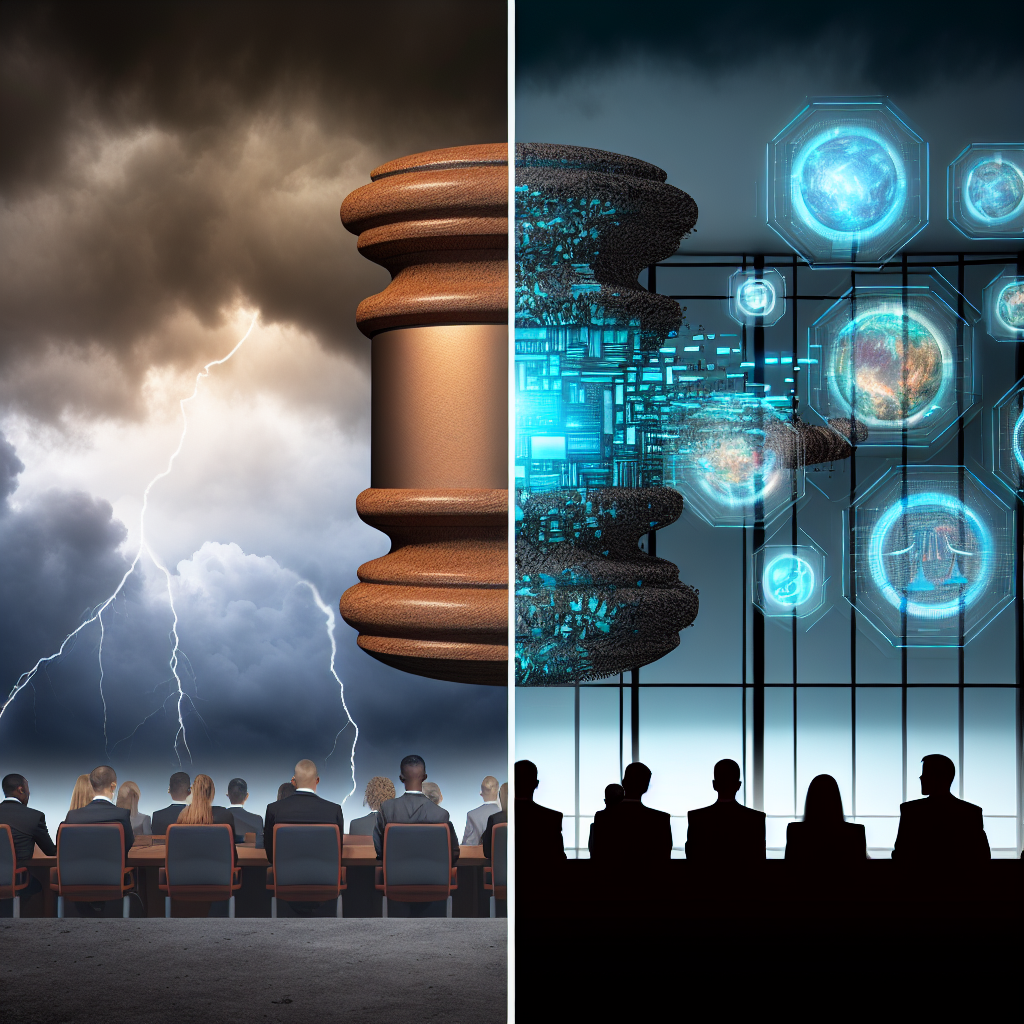# Law and Insurance in the Digital Era: How AI and Nuclear Verdicts Are Rewriting the Rules
The collision between law, technology, and insurance isn’t just a headline — it’s transforming the foundation of how insurers assess risk, litigate claims, and protect their policyholders. As artificial intelligence (AI) drives sweeping innovation and “nuclear verdicts” shake courtrooms with unprecedented jury awards, the insurance sector faces a challenge it can’t afford to ignore: adapt fast or face the cost.
## The Rise of “Nuclear Verdicts” — And Why They Matter
If you haven’t heard of “nuclear verdicts,” you soon will. These are jury awards over $10 million that are increasingly rocking the insurance industry. According to legal experts Robert Tyson and Cayce Lynch of Tyson & Mendes, the frequency and severity of these verdicts have exploded in the past 15 years due to a dramatic shift in litigation strategy by plaintiff attorneys.
What’s behind this trend? No, juries haven’t lost their minds, but rather, they’ve been effectively influenced. Plaintiff attorneys are moving away from sympathy and now focus on generating anger in the courtroom — anger toward corporations, institutions, and systems seen as negligent or dishonest. The results? Outrageous settlements supported by emotionally driven jurors.
Said Tyson: “It’s not about sympathy anymore—it’s about creating anger. And that anger fuels huge non-economic damage awards.”
## Why Insurers Are Losing the Legal Battle
While plaintiff attorneys have evolved, it’s the inaction of insurers and defense lawyers that’s become apparent.
“The defense bar has largely stayed the same,” Tyson stated. “Meanwhile, plaintiff lawyers are trying cases in completely new ways—and they’re winning big.”
Indeed, instead of changing their litigation strategies to respond to this new environment, insurers and defense teams are stuck playing by old rules. This mismatch allows the plaintiff bar to dominate in court, manipulating narratives with tactics such as the “Reptile Theory,” which exploits juror emotions and bias against corporations.
Cayce Lynch emphasized another factor: “Anti-corporate bias is at an all-time high since 2020. Plaintiffs are tapping into that to drive massive awards.”
## Breaking the Pattern: The “Apex” Defense Strategy
Tyson and Lynch argue that stopping nuclear verdicts comes down to breaking a predictable — and avoidable — pattern. In their new playbook launching this October, they outline their data-backed “Apex” method, showing that nuclear verdicts follow specific trends, and defense teams can disrupt them by following four key steps:
### The “Core Four” Defense Strategy:
1. **Personalize the Defendant:** Show the jury that behind the corporate name is a human being or a local business working hard to do the right thing.
2. **Accept Responsibility (Without Admitting Liability):** Jurors reward honesty and accountability. Accepting responsibility can defuse anger and build trust.
3. **Present a Defense Number:** Don’t leave damages up to the plaintiff’s imagination. Offering a credible number anchors expectations.
4. **Argue Pain and Suffering Creatively:** Don’t shy away from addressing emotional damages. Tell your side of the story and offer context.
The shocking revelation? According to their analysis of 100 nuclear verdicts, not a single one occurred when all four of these steps were adopted. It’s a compelling case for change.
## AI: The Game-Changer for Insurers?
Technology, especially AI, has the potential to be a lifeline for the insurance industry.
AI can identify patterns unseen to human eyes—flagging at-risk claims before they spiral into nuclear verdicts. Tyson and Lynch’s tech startup, Naval, uses machine learning to detect red flags in real-time, offering up to 80% accuracy in predicting potential legal exposure.
But while C-suite executives tout their AI investments during earnings calls, the reality on the ground often looks different. Many claims departments are still slow to implement these tools. That hesitation could be costly.
“AI is here,” Tyson said bluntly. “The plaintiff bar is already using it—in some cases to generate emotionally gripping closings. If you’re not using it yet, you’re already behind.”
## The Road Ahead: Will Insurers Rise to the Challenge?
So, where are we headed? Will insurers keep scratching their heads after every billion-dollar verdict? Or will they embrace data, AI, and new trial strategies to evolve with the times?
“There’s hope,” said Lynch. “We now know the pattern—and we know how to break it.”
The fundamental takeaway: nuclear verdicts aren’t just freak occurrences. They’re the foreseeable result of outdated practices against a modern, well-equipped legal opposition.
Plaintiff lawyers share strategies, data, and psychological techniques. It’s time the insurance defense world does the same.
## Final Thoughts: Time for a Legal Wakeup Call
The legal and insurance industries are standing at a crossroads. With verdicts escalating, AI gaining ground, and public sentiment shifting, insurers must rethink their litigation approach—and fast.
But there’s good news: the tools to fight back aren’t just theoretical—they’re real, proven, and ready for action.
📢 **Are you ready to future-proof your litigation strategy? Start by reading “Nuclear Verdicts: The Apex — Break the Pattern” when it drops this October, and speak with your legal teams about adopting the Core Four today.**
🔍 Want more updates on law, AI, and insurance? Subscribe to our newsletter and stay ahead of the curve.
Don’t wait until the next blockbuster verdict. Start creating your legal defense advantage—today.

